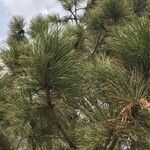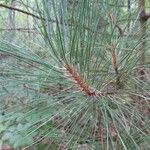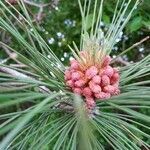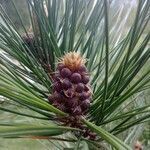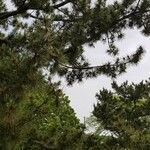Tree to 40 m; bark becoming light red-brown, with scaly plates; winter buds ca 1.5 cm, the scales red-brown with white-fringed margins, not very resinous; lvs in 2’s, persisting 4–5 years, dark green, 9–16 cm, snapping cleanly when bent; cones spreading, conic-ovoid, 4–8 cm, the apophysis thickened, the umbo smooth and spineless; seeds 1.5–2 cm. Dry, sandy or rocky soil; Nf. and N.S. to se. Man., s. to Conn., Pa., n. Ill., and Minn., and in the mts. to W.Va.
